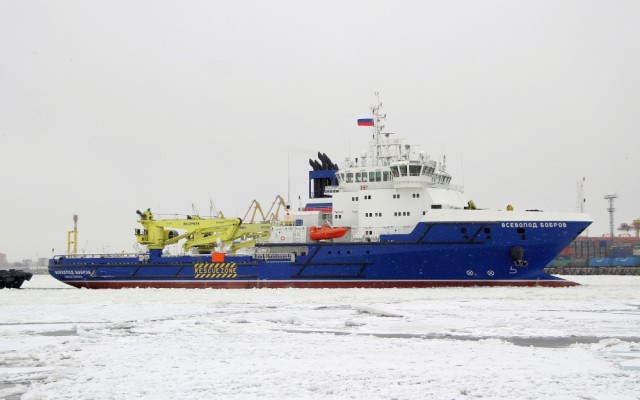TSAMTO, April 2. The logistics support vessel Vsevolod Bobrov of Project 23120, built at the Severnaya Verf (part of JSC USC), completed the first stage of factory sea trials in the designated area of the Gulf of Finland and returned to Kronstadt for resupply.
This was reported to the Commander-in-Chief of the Russian Navy, Admiral Nikolai Evmenov, at a meeting where the issues of testing new ships and vessels built for the Navy were considered.
During the first stage of the factory sea trials, the ship's radio navigation equipment, communications equipment and the operation of the main propulsion system were checked.
It is planned that, having replenished stocks to the required standards, the Vsevolod Bobrov SRT will again leave Kronstadt on April 3 for the next stage of factory sea trials, during which the vessel's towing devices will be checked.
Sea trials in the Baltic Sea will last about a month. A delivery team of more than 100 people will work on the ship together with the crew. Its tasks include checking the main power plant, other systems and mechanisms, testing the operation of cranes and winches in open sea conditions. It is planned that in April, the delivery team and the crew of the ship should go to the state tests.
Vsevolod Bobrov is the second vessel of the project 23120, built at the Severnaya Verf. The lead ship "Elbrus" joined the detachment of support vessels of the auxiliary fleet service of the Joint Strategic Command of the Northern Fleet in 2018. In 2019, the Elbrus completed a 175-day circumnavigation of the world as part of Russian ships led by the frigate Admiral of the Fleet of the Soviet Union Gorshkov.
Based on the results of the operation of the lead vessel, the project 23120 was finalized. In particular, the deck functionality has been increased, communication and navigation systems have been improved.
The project 23120 Vsevolod Bobrov logistics support vessel is designed for cargo transportation, towing, hydrographic research, and assistance to ships in distress. Thanks to the crane equipment and the dynamic positioning system, the vessel can perform loading operations at the unequipped mooring walls and in the open sea. Automation class A1 provides maintenance-free maintenance. The hull with the ARC4 ice class is designed to overcome ice with a thickness of 0.6 m, according to the Information Support Group of the Navy.

